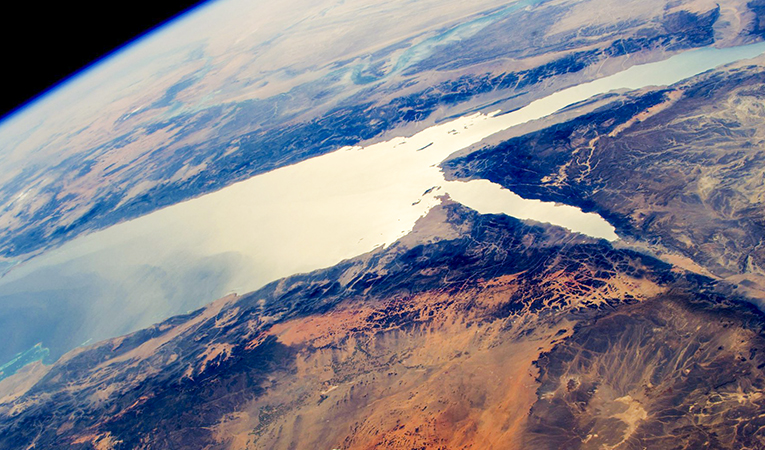The Red Sea is, rapidly, developing as one of the world's
largest offshore oil production areas. It also comprises a wide range of
tropical marine habitats, many of which are internationally recognized for
their conservation, scientific, economic or recreational value. Past oil
production, refining and transport have resulted in chronic pollution of some
areas. environmental programs has been set to protect, new developed areas,
from pollution damages .At an initiative step for an Egyptian oil company operating
in the Gulf of Suez, an environmental protection and management scheme has been
prepared for a new offshore oilfield and marine terminal in the red sea
boarders.
Major General Ahmad Abdullah, Governor of the Red Sea, opened
the "Egypt Al Mahrousa 8" practical experiment, yesterday, organized
by an oil sector company in cooperation with the Red Sea Governorate, 7 oil
companies and 4 governmental bodies.
The activities of the experiment began with a scientific
conference, to discuss the scientific and environmental methods of pollution
combat systems , in the presence of Eng. Imad Abdul Razek, Chairman of
PetroSeif oil company, during which he reviewed the steps of dealing with the
occurrence of an oil leakage that hits the shores of the governorate. A program
has been generated, to calculate the direction of the oil spill, using the most
environmentally friendly methods, to identify the oil spot and recover it,
through the latest equipment in case of the inability to fit the cause of this
leakage.
The experiment was set in three locations: in Jabal El-Zayt, the new marina and
the social club, under a call of the appearance of an oil spot, estimated at
about 150 tons of crude oil in a marine area in the south of an island. Marine
control units, that belongs to some oil companies in Jebal El-Zayt area, has
been pushed to start the maritime control steps to recover the oil leakage in
some mechanical combat methods.
The experiment includes equipment and control teams working
in 7 combat centers, including 5 major maritime centers, spread along the coast
of Egypt in addition to the two river control centers, in Al-Tebeen area,one at
the south of Cairo and the other in Aswan.
The experiment scenario was prepared on the assumption that a
crude oil contamination was detected, on a scale of about 150 meters, in the
area south of “Tawila and Gamsha” islands. Accordingly, the various operation
rooms were activated, the readiness of all the control centers was increased,
the marine units equipped with the control equipment to be moved to the
accident area, using electronic modeling systems to identify the pathway of oil
and potentially threatened beaches, so that appropriate equipment has been
pushed to protect environmentally sensitive areas, carry out shore control work
and clean the damaged beaches.












 All
All
 Politics
Politics
 Economy
Economy
 Tourism
Tourism
 Nature
Nature
 Community
Community

